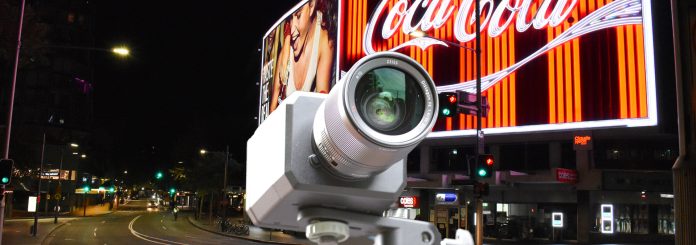Sony SNC-VB770 Camera Review offers low light performance under 0.004 lux thanks to an enormous ISO of 409,600.
Contents
Sony SNC-VB770 Camera Review – Sony’s SNC-VB770 is a low light weapon that combines high resolution and stratospheric ISO levels to offer unsupported low light performance that’s superior to any other commercially available CCTV camera on the planet. How does it work in the real world? SEN finds out…
In the lead-up to SecTech Roadshow’s camera shootout, SEN got hold of Sony’s 4K SNC-VB770, a full frame Exmor-powered CCTV camera with a stonking ISO rating of 409,600. Typical full-frame still cameras have ISO performances of up to 24,000, so the VB770’s ISO number is stupendous. The SNC-VB770 offers low light performance under 0.004 lux thanks to an enormous ISO of 409,600, which allows signal amplification that’s strong enough (yet controlled enough) to make for shutter speeds fast enough to snag motion in low light.
Does it get down to 0.004? We can’t test light levels that low, but minimum illumination is spec’ed at 0.004 lux (30 IRE) with normal (1/30th sec) shutter speed, not slow shutter.
This camera is compatible with Sony’s E-mount FE lenses with the lens supplied separately. In this test, we’re running the 770 with Sony’s FE F1.4 35mm full frame lens attached. A full frame 35mm offers an angle of view that’s similar to around 5mm at 1/3-inch, which is ideal for the street. Before we get lost in performance, let’s do the specifications.
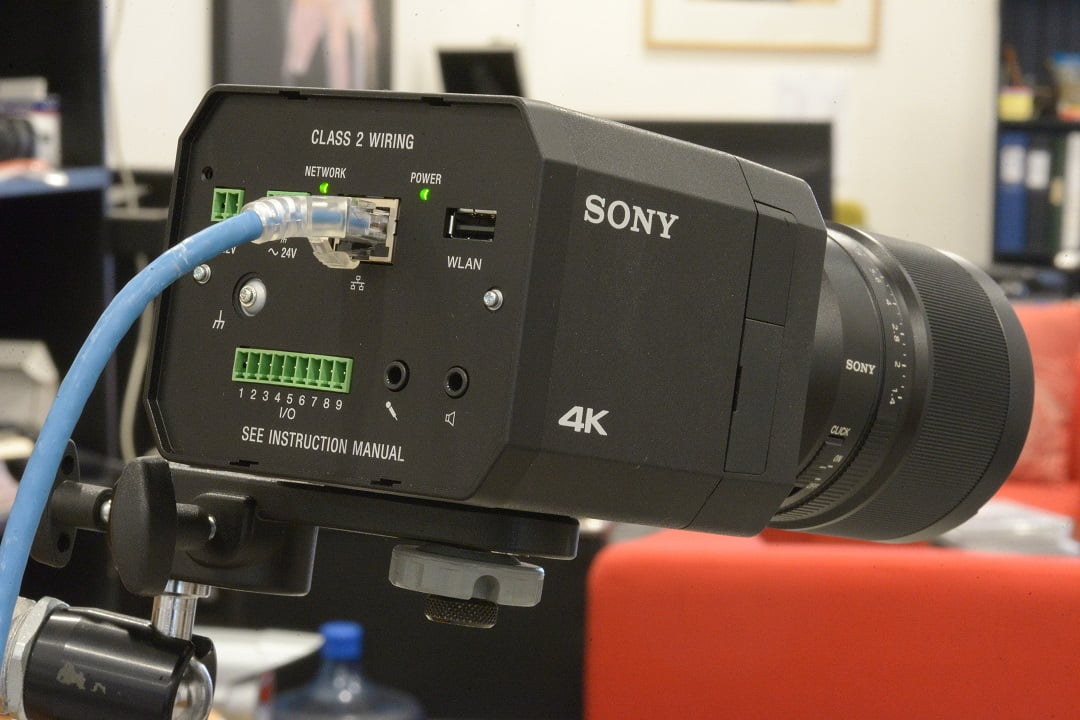
The full-frame CMOS gives a resolution of just over 12MP, minimum scene illumination is claimed to be 0.004 lux at F1.4, a 1/30th of a second shutter speed and an ISO of 409,600. Dynamic range is equivalent to 100dB (View-DR technology), gain is zero to +72dB, shutter speed is from 1/1 to 1/10,000 of a second. You have to take a considered view of the seemingly low dB number for WDR – Sony cameras, including this one, handle backlight very well.
There’s exposure control, exposure compensation, AGC, iris control, white balance options including TW, ATW-PRO, fluorescent lamp, mercury lamp, sodium vapour lamp, metal halide lamp, white LED, one-push WB, manual, indoor and outdoor. Eagle-eyed CCTV people will have noticed this is not a day/night camera – there’s no cut filter and that enhances image quality.
Other features include tone correction, visibility enhancer, de-fog, highlight compensation, flicker reduction, distortion correction, XDNR noise reduction, intelligent scene capture, 24 privacy masks of various colours, shapes and sizes, and edge storage using 128GB microSD. Up to 20 clients can access camera views via the browser at the same time.
There are loads of resolution options – I run at 3840 x 2160 H.264 main profile – and there’s bitrate control via CBR/VBR and the capacity for 5 simultaneous streams. Analytics is DEPA Advanced offering intelligent motion detection, face detection, tamper alarm and scene analytics – these include intrusion, passing existing, disappearance, capacity, left object and removed object. There’s also multi-tracking of 4 targets in a scene. On the system side, this camera needs i7 3.4GHz or higher processing and if you want 30ips at 3840 x 2160, you need a GPU capable of this performance with minimum 4GB of RAM or higher.
Networking
Networking capabilities include IPv4, IPv6, TCP, UDP, ARP, ICMP, ICMPv6, IGMP, MLD, HTTP, DHCP, DHCPv6, DNS, NTP, RTP/RTCP, RTSP over TCP, SMTP {client}, HTTPS, FTP (client), SNMP (v1, v2c, v3), TLS {v1.0}, *SSM (Source Specific Multicast), QoS, DSCP, Multicast Streaming Support and ONVIF Conformance Profile S. The camera can also handle IEEE802.11b/g/n wireless networks with optional IFU-WLM3 for wireless peer-peer camera setup using a smart phone app and there’s IEEE802.1X for authentication. There’s no analogue video output, but there’s HDMI, a microphone input jack, an alarm input and an alarm output.
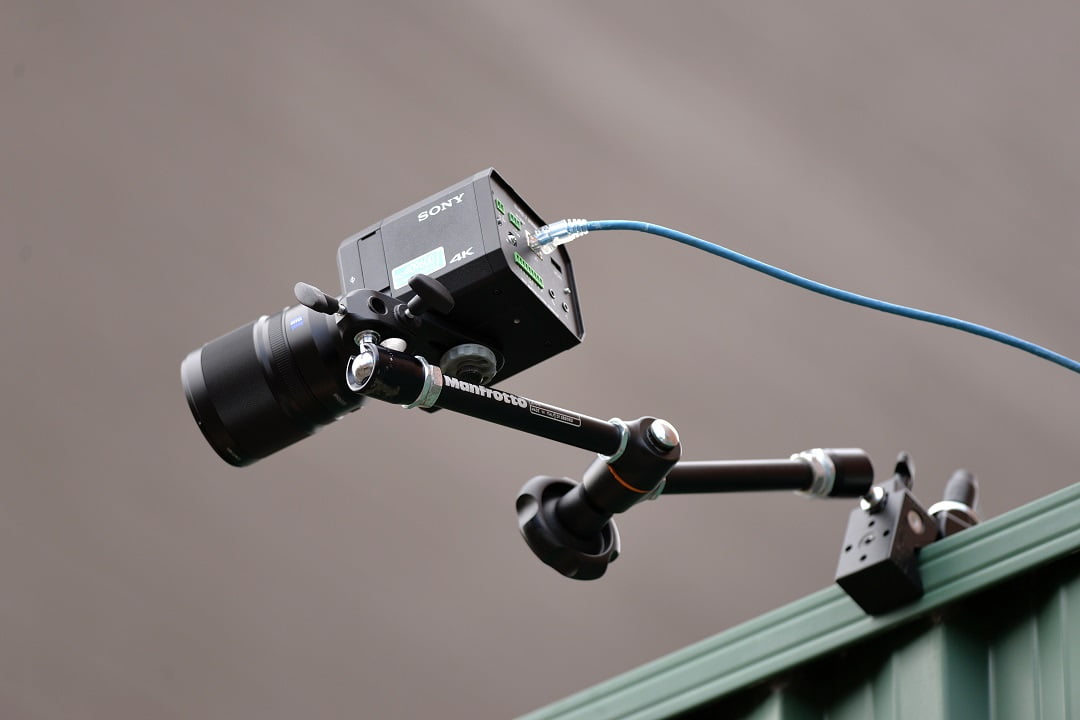
Build quality is typical Sony full body – the camera is well made with no rough edges or misshapen ports and the lens mount mechanism works sweetly.
For external applications, you’d need to install the SNC-VB770 in a housing – it’s big (though not particularly heavy at 720g without lens), so you’d need to make sure you chose a housing wide and high enough to accommodate its dimensions, which are 104mm long x 84.6mm high x 118mm wide (without lens). When it comes to operating temperature, the 770 can handle -5 to 50C, which is about normal for a full body camera. In hot climates, you’d need to think about a fan-cooled housing or mount the camera under a roofline. (Sony supply housing solutions designed to accommodate the VB770 camera and lens options).
The lens we are using is Sony’s Zeiss Distagon F1.4 35mm with 9 rounded aperture blades and an aperture range down to F16. This lens weighs about 600g, has an angle of view of 64 degrees, is sharp and gives nice contrast and colour rendition. Photographers rave about the way the super fast Zeiss Distagon renders bokeh quality that enables foreground objects to ‘float in the air’ and that’s a fair judgement. More importantly for CCTV people, it has no dust sealing at the rear, so you need to bundle it up, even when installing it internally.
Camera Review Street Performance – Sony SNC-VB770
I start my test at 5.15pm and it’s already getting gloomy between the buildings with the SNC-VB770. The 35mm F1.4 lens has a good wide view of the street and I position it to avoid trees and walls. It’s a nice focal length for a full frame camera on the street, 35mm. As soon as I look at the monitor I can see that Sony’s SNC-VB770 is something special – performance is not the same as other cameras we’ve tested.
Detail is very high – this makes digital zoom more than an annoying toy. This is a wide-angle lens yet I get levels of face recognition quality I’ve not seen before – if you put an 85mm lens on the SNC-VB770 you could take portraits with it – this camera really is that good. Colour rendition is sweet, too.
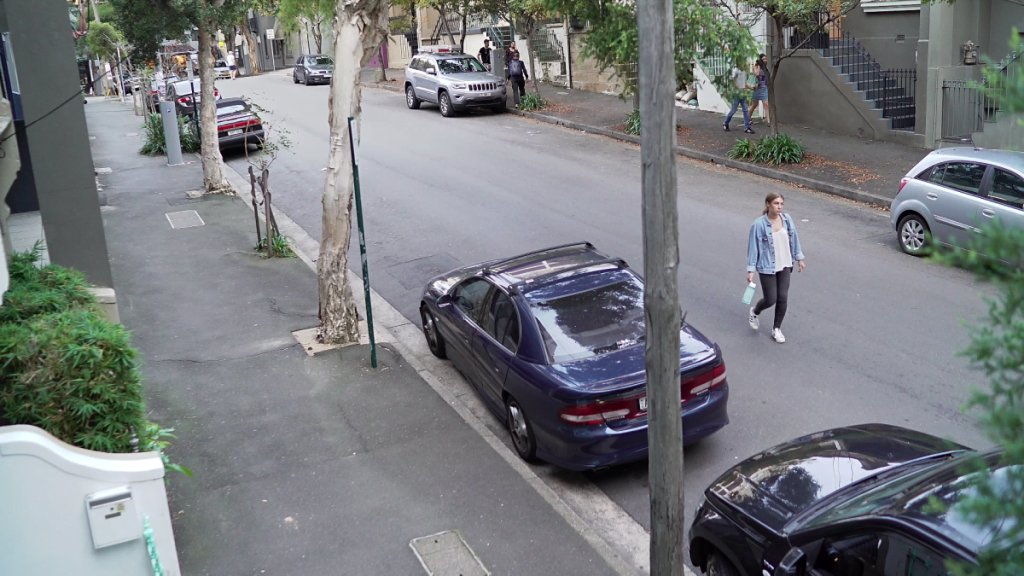
I can still get plates at distances of up to about 20m depending on vehicle speed even though it’s gloomy outside now. Depth of field is sensational – all those pixels really do add up. I think I have admissible face recognition at 25m, which is super performance. Even past the point of face recognition, levels of detail are exceptionally high.

That word ‘detail’ really is the key in daylight performance. There’s loads of detail everywhere you look at a wide-ish focal length of 35mm (that’s about 5mm @ 1/3rd-inch). I’m getting watch faces, the patterns in socks, shoelace colour, the design of pendants hanging around necks, the funny looks on people faces – none of this stuff is typical in a wide street scene and I have it from half a metre out to 16m in extreme detail, softening but remaining exceptional all the way out to 80-plus metres on the other side of Albion Street.
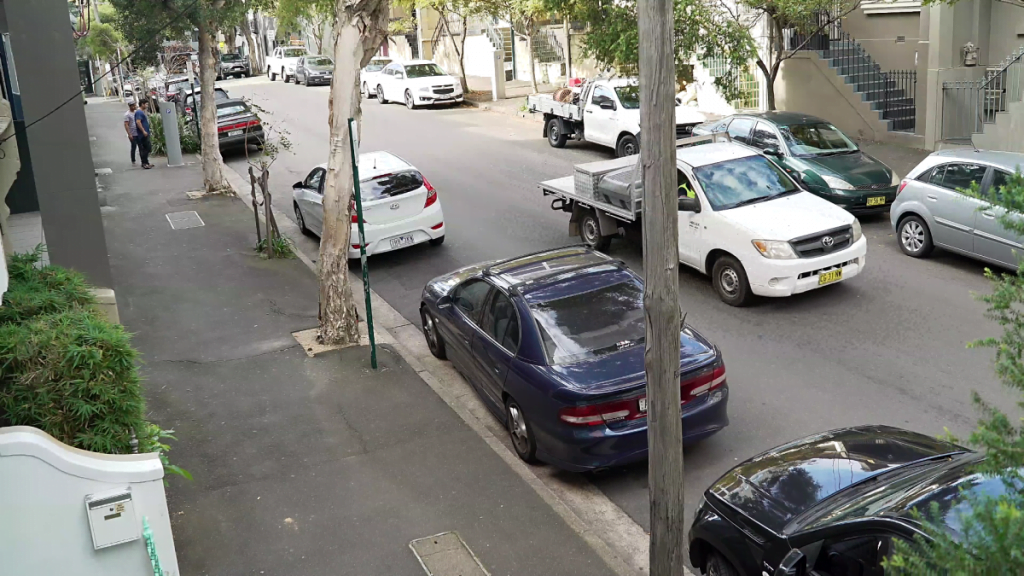
There’s a point and a vehicle speed at which I lose plates and a distance at which I lose faces and this comes closer to the lens as light falls – it’s inside 20m at about 5.10pm. Re-focusing helps. At 5.25, with light levels seeming the same on the monitor, but dropping significantly outside (they are around 800 lux), I lose faces at 16m and they get soft at 12m.
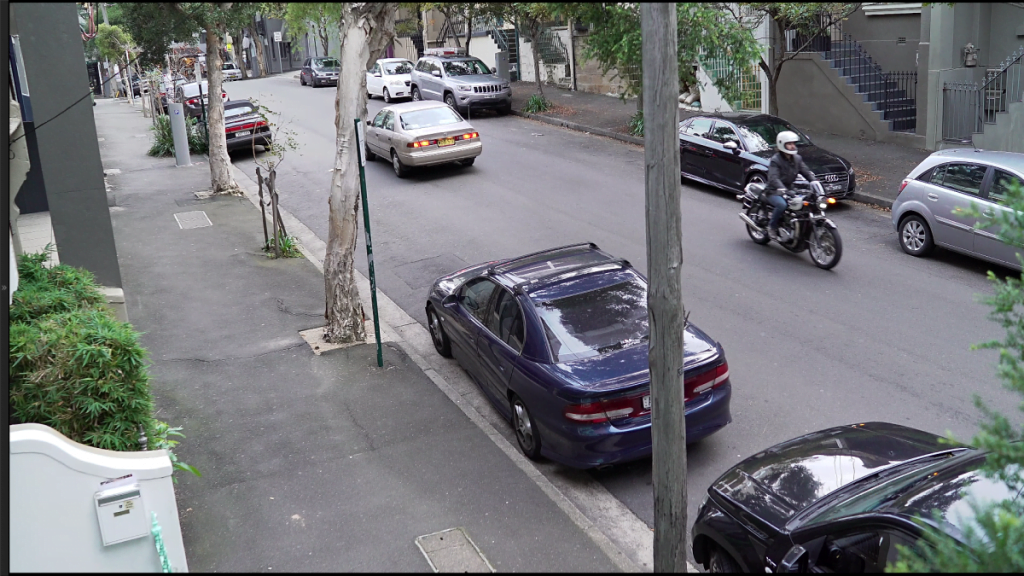
Plates get softer and softer and at 5.40pm I lock the bottom shutter speed to 1/100th of a second. The slower shutter speed costs me detail deeper in the scene but I have my faces back at very high levels of detail again. Later on, I decide 1/50th of a second is my best shutter option and I lock that in for the duration of this part of the test.
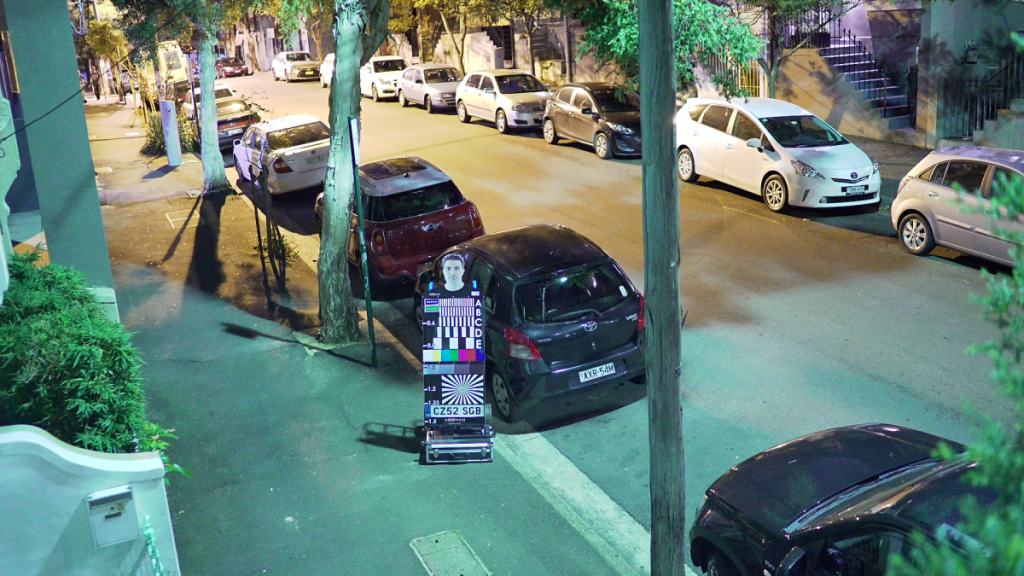
There’s a point I lose moving plates – I’m not prepared to up the shutter speed to keep them. At about 7.10pm, Norman heads out front to do his thing. This is the best image of Norman ever on the street in 7 lux. He’s positively glowing at 10m. I have detail from the A-line down, lovely skin tones and excellent colour rendition, including white into yellow, which is always the first delineation to go.
I wonder if I can see Norman’s eyes and when I zoom in, I find the streetlight is provoking CAs from the lens to a depth of about 5 pixels. This is a fast lens wide open – not surprising. I notice I still have face recognition at 20m. This is all at 35mm – no zooming.

Something I note is that noise levels are very low in 7 lux. Later, I find the only way to provoke noticeable noise from the VB770 is to point it at complete darkness. At 7.49pm I get a moving plate at 20m, blooming is well controlled, too. From this point on, things remain the same. The light is between 4-7 lux across my scene and the image is solidly consistent with little or no false colour. I often notice cameras struggle to handle the low colour temperature of the sodium street lights but the SNC-VB770 is un-phased by it, returning a cool colour rendition.
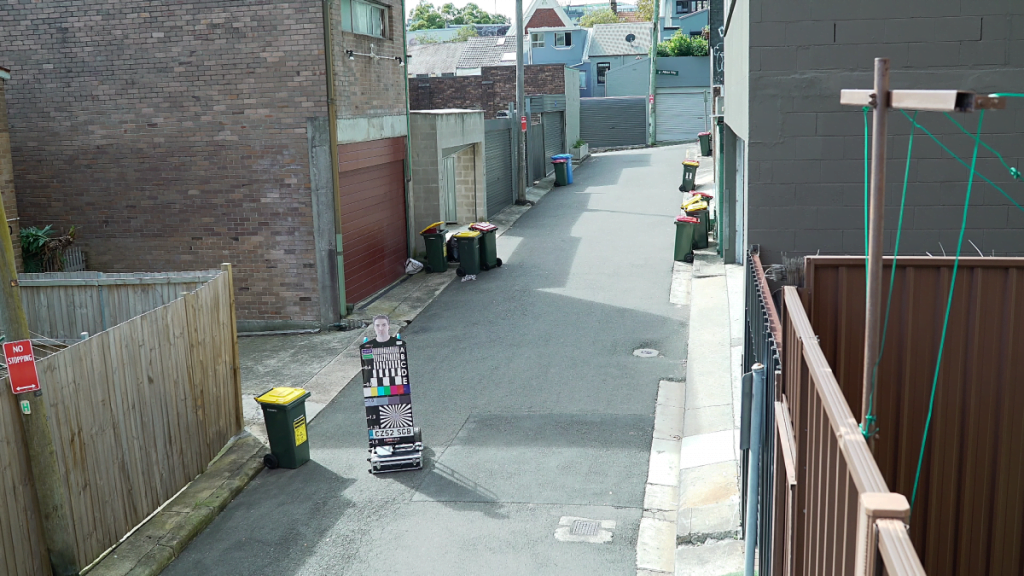
Next day I put the camera above the lane. It’s bright – I measure just over 80,000 lux with the sun to the North above Albion Lane, about 70m away. In the lane, the width of the 35mm lens has limitations – probably 60 per cent of the scene is of walls that I would dial out with a varifocal lens – a 50mm lens would be better out here, with a lower mounting height. Regardless, levels of detail are exceptionally high – this is still by far the richest wide view I’ve had. I can read the Albion Lane sign at full wide – hooray!
Most importantly for this part of the test, WDR performance is excellent. I have BLC off but there’s no sign of blooming, no CAs looking into the sun (there is spherochromatism at other times), and it’s a very nicely balanced image, with no digital blockiness, plastering or false colour. Resolution is so high and light into dark performance is so linear, I can look into a distant neighbour’s garage up on Albion Lane using digital zoom and make out a mother holding up her toddler before putting him into a car seat – this is at 35mm!
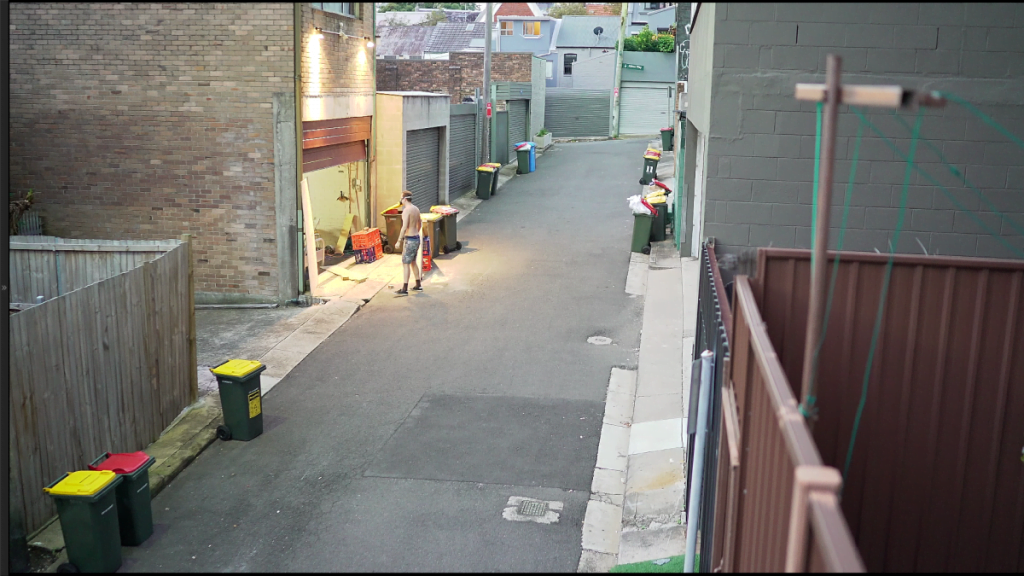
Throughout the morning and into the afternoon, images from the lane are notable for their natural colour rendition, huge levels of detail (jeans labels, the colour and design of carry bags as far as Albion lane, watch straps) and colour balance. I can also see barrel distortion thanks to the brick and block walls all around – it looks around 1.5 per cent. This is not an easy scene to manage but the SNC-VB770 swallows it whole. I get a plate moving up the lane past 20m and my neighbour comes out to do some woodwork and when he takes off his shirt at about 20m, I can see he’s had his appendix out.
At about 5.30pm, something interesting happens to the image – it loses focus. There’s no cut filter, this not being a day/night camera, so I’m thrown for a moment and adjust shutter speed trying to recover sharpness. But a re-focus brings everything back together again – later I find a night focus is best for day and night.
Detail levels remain stupendous. It’s at this point I notice there’s a little blur on the adjacent fence line. Earlier, when pedestrians had walked under the camera I had noticed faces were out of focus right under the lens and looking closer it seems that with the lens focused at about 16m I have relatively mild bokeh to about 4m. The wide aperture is likely playing a part here but the price is well worth the brightness of the scene as the sun disappears.
Perhaps the only elements of this scene that alter with the transition from 8000 lux to sub-4 lux are the near side of Fred’s fence, which was out of focus anyway and is pitch dark to the naked eye. On the monitor, I can see the fence in colour but it comes courtesy of noise thanks to that freight train ISO rating. Interestingly, the noise is localised at the dark edges and there’s no sign of it in the brighter centre portion of this scene. And it’s only visible when the flood lights are on in the lane.
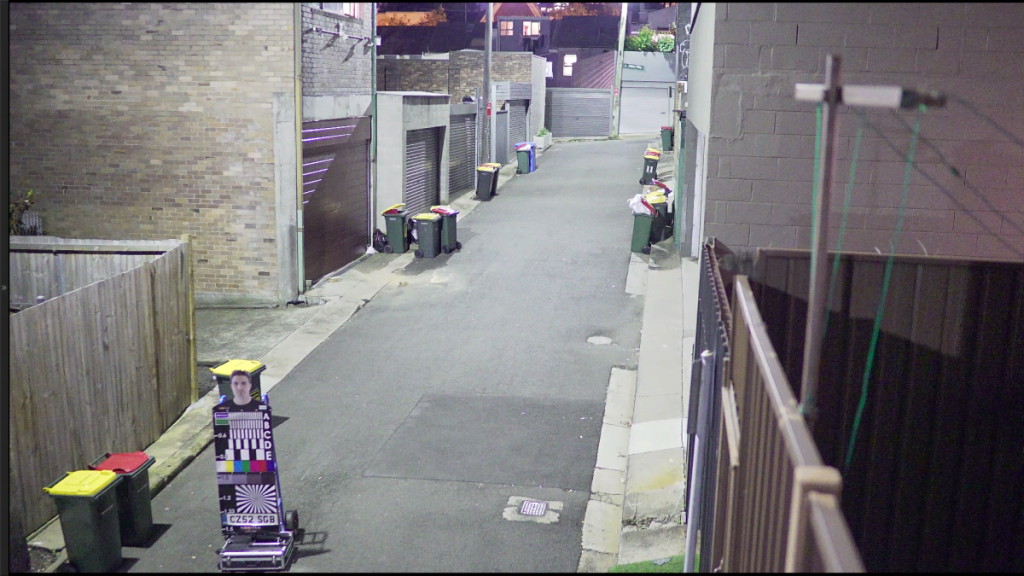
Something else that’s interesting is the sensitivity of this camera to low light. The lane is quite dark save for 3 street lights – one 4m in front of the lens, one 40m from the lens and a third 70m from the lens. All around these three 1800k orange pools of low pressure sodium are dark holes. There’s a PIR-activated floodlight at 18m and when this turns on and off it has an impact on the scene as amplification winds up when the light is off. Any amplification adds noise but even after long deliberation I can’t decide if amplification increases or reduces detail overall – it’s a bit both ways and that balance is a good thing.
I put Norman out and he looks good at 8m from the lens with a measly 2 lux at the face – colour rendition is solid – I have face recognition and with a turn of the mouse wheel I see I have his entire target with a little softness to the A line – that’s down to spherochromatism and amplification noise and the fact the focal point is at 16m from the lens.
Once I’ve dragged Norman back inside (he wanted to head down to the KB for a pint) I get Ronnie Rotakin out into the lane. I’m expecting to get some reasonable blur levels out here at 1/50th of a second but no, blur is the lowest I’ve ever seen it, which conforms to our findings at SecTech Camera Shootout last year. Excellent performance, Sony.
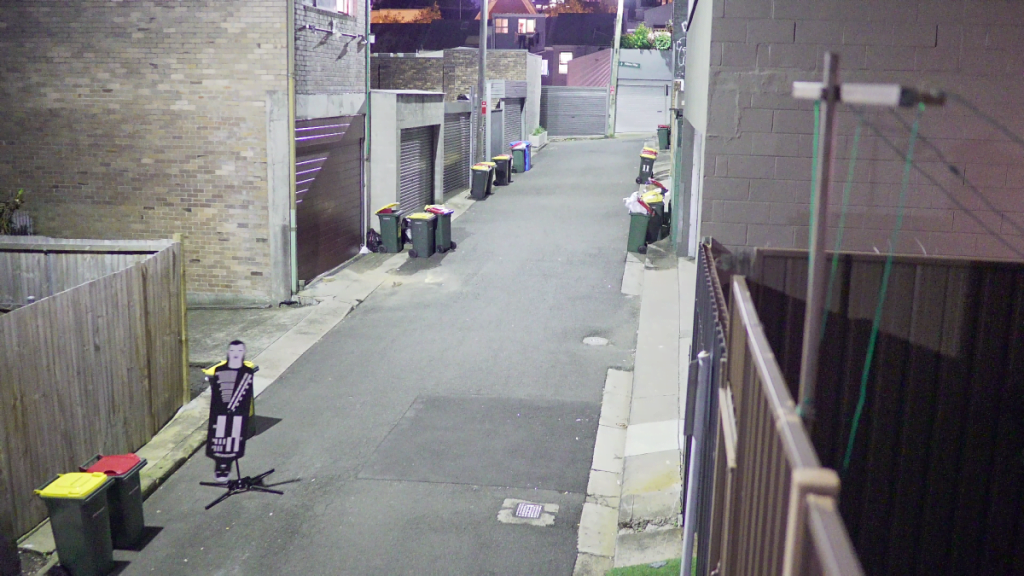
Later when I play around in the darkest corner of the courtyard things get weird. There’s no night mode to mess around with – I just point the camera (I’m at 1/25th of a second now) and have at it. There’s some noise there but I have lovely colour and tons of detail.
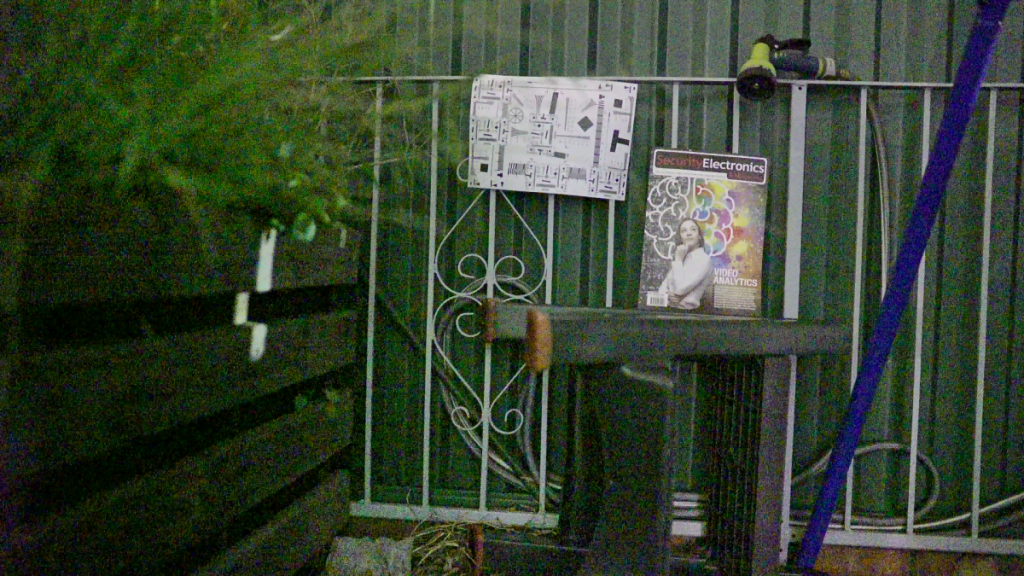
After this I head inside and turn out all the lights and with zero lux at the lens the VB770 is giving colour, face recognition and the license plate. Is this the best low light camera we’ve ever tested? Yes, it certainly is.
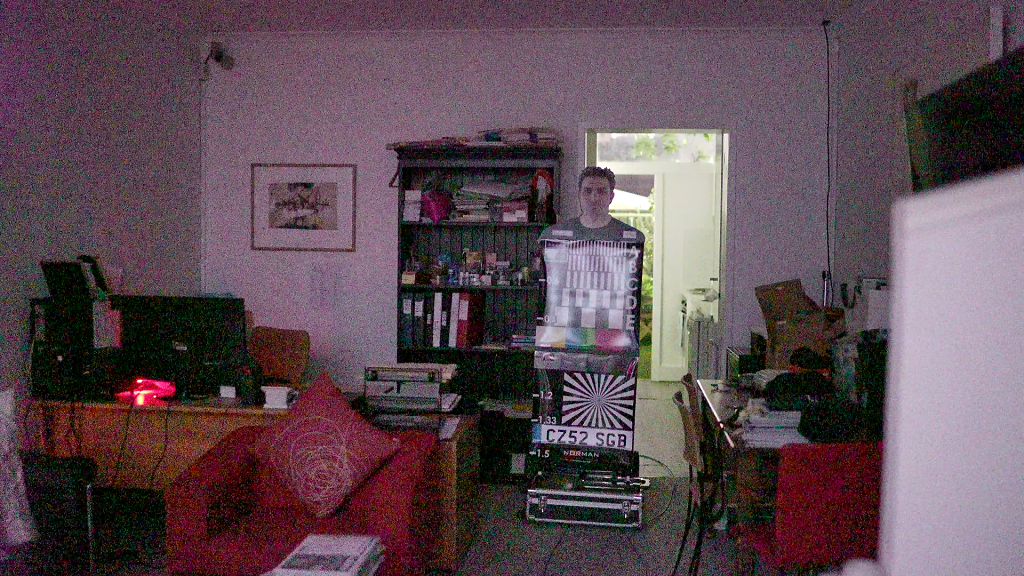
Sony SNC-VB770 Camera Review Conclusion
Sony’s SNC-VB770 is an excellent surveillance camera. In terms of core functionality, it has abilities in low light that are unmatched by commercially available competitors and there are real world applications in which it would excel. Sometimes you might choose thermal in very low light applications – at other times you might need unassisted colour performance.
Typically for a Sony camera, it does the basic things very well, almost to the point of not noticing them – colour rendition, control of noise, low distortion, minimisation of digital artefacts – the core aspects of surveillance are all exceptionally well managed.
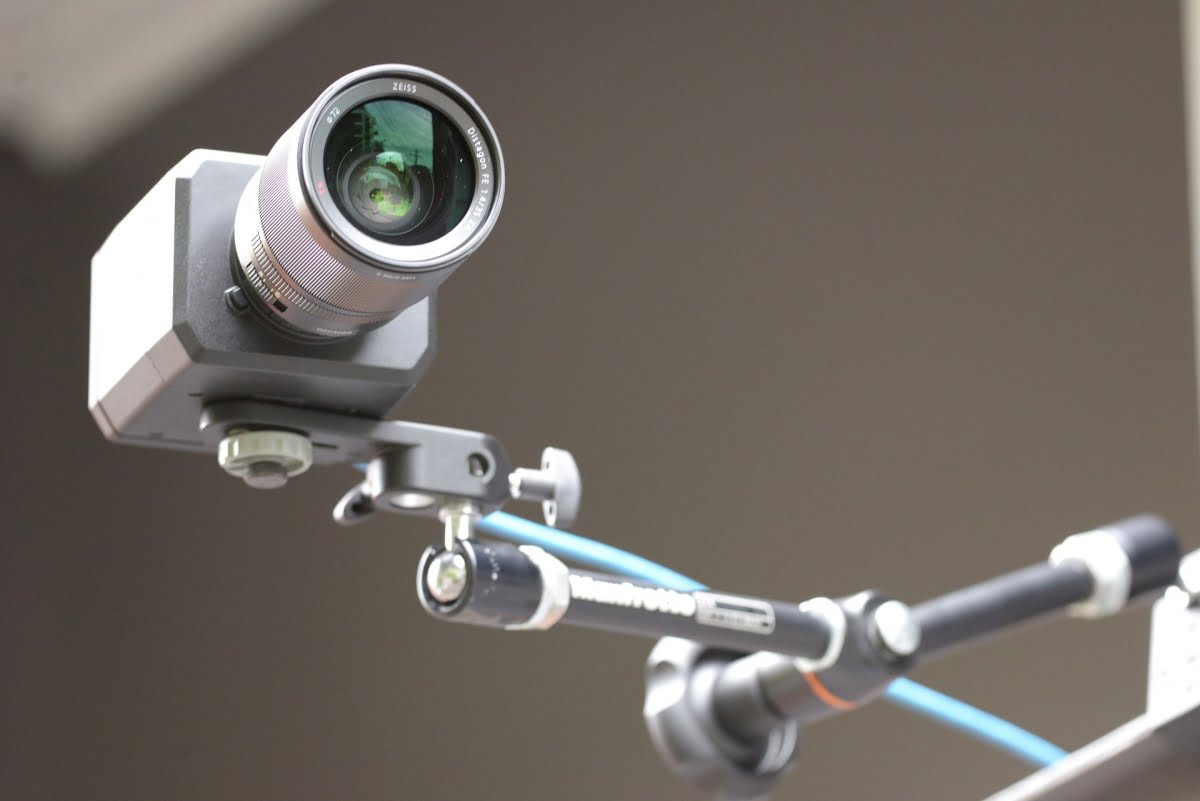
The combination of a full frame (35mm) sensor and the Sony (Zeiss Distagon) 35mm F1.4 lens is a good one. The price you pay for the excellent low light performance is spherochromatism and chromatic aberration when there’s strong light playing on areas of high contrast but it’s a price well worth paying. At all times, the VB770 gives unparalleled face recognition on the street at what is a relatively wide 64-degree angle of view.
A lot of the cameras we test do reasonably well at close faces (inside 8m) at wide angles but the 770 does both out towards 12m in very low light and provides portrait quality images in good light closer and court admissible faces to 25m. This camera’s ability to deliver a colour image of Norman, with court admissible face recognition in complete darkness is the standout capability. Just, wow.
Is this the best CCTV camera ever? Not withstanding that high end Canon camera no one could afford in real world applications, the Sony SNC-VV770 is the best 4K camera we’ve ever tested and it performed well on the test jig at SecTech as well. In terms of real world external applications, this iteration of the Sony 4K chipset is impractical, but its awesome performance reminds us why serious camera manufacturers still use Sony sensors.
You can see more SEN news here and read a security consultant’s opinion of 4K in challenging low light conditions here.
Sony SNC-VB770 Camera Review Features:
* Image Sensor: 35mm full-frame Exmor CMOS 12.2MP.
* Minimum Illumination: (30 IRE) 0.004 lx (ISO409,600, 1/30 s, F1.4).
* Dynamic Range: Equivalent to 100 dB with View-DR Technology.
* Gain: Auto/Manual (0 dB to +72 dB).
* Shutter Speed: 1/1 s to 1/10,000 s.
* Exposure Control: Exposure compensation, AGC, Shutter speed, Iris.
* White Bal: ATW/PRO, Fluoro, Mercury, Sodium Vapour & Metal Halide Lamp, White LED.
* There’s one-push WB, Manual, Indoor, Outdoor.
* Lens E-mount with FE lens optional.
* Easy Zoom and Quick Focus.
“Sony SNC-VB770 Camera Review offers low light performance under 0.004 lux thanks to an enormous ISO of 409,600.”



